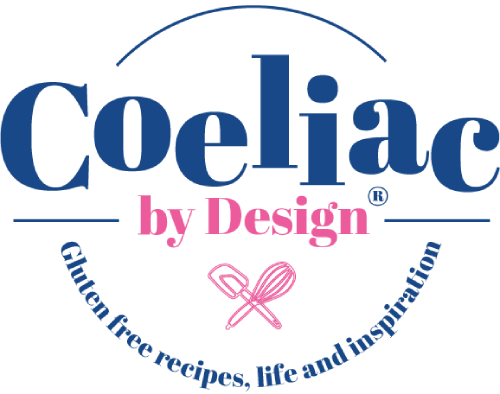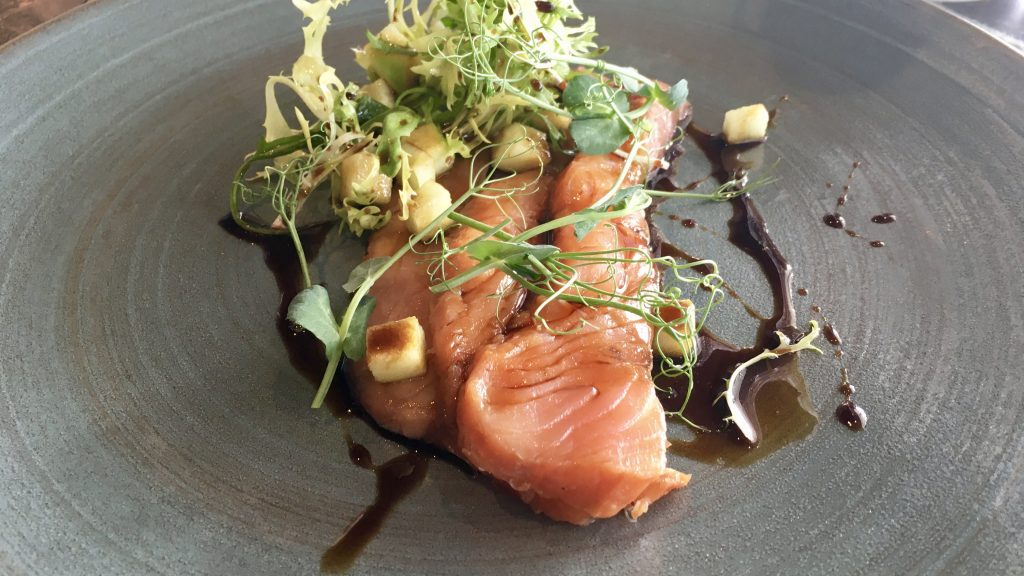Whilst it’s brilliant that many eateries can safely cater for people with coeliac disease (or anybody that requires a gluten free diet), unfortunately, there are a few that don’t quite get it right. I personally feel the lack of understanding, of how crucial a strict gluten free diet needs to be for people living with coeliac disease and the fact that some people choose the diet as a lifestyle option, (but are not always committed to the diet) seems to have caused confusion about the true need and meaning of a gluten free diet.
Anybody living with coeliac disease will tell you how reassuring it is to walk into a place to eat, and be taken care of by staff who totally understand the condition. But it’s also important to remember, that there are other reasons why people need to follow a gluten free diet. It could be that they have gluten sensitivity or they removed gluten from their diet before being tested for the coeliac disease. And, as there is only around a quarter of people living with coeliac disease in the UK (I’m not sure of the worldwide stats) that have been medically diagnosed, the chances are, many people who opt for a gluten free diet as a lifestyle choice, could unknowingly living with the condition and therefore need protecting too.
Some eateries put a lot of extra effort in place to ensure things are ‘gluten free’ when catering for somebody with coeliac disease – opposed to somebody who has chosen to follow a gluten free diet. But this shouldn’t be the case, as if you are advertising a dish as gluten free then that’s exactly what it should be at all times.
As someone who has worked as a cook for many years, I felt it would be good to use the experience I’ve gained in the catering industry, and the personal knowledge I have with regards to living gluten free, to offer up a few tips that you may like to adopt in your kitchen, to help ensure you can safely feed anybody that requires a gluten free diet.
Planning a gluten free menu
A well thought out gluten free menu is definitely the way to go for both gluten free diners and hospitality staff. And whilst it may be lovely to have an extensive menu to pick from, the majority of people who live with dietary needs understand that options available to them may be limited. So, as a caterer planning a gluten free menu, the only things you need to concern yourself with is that it’s great food and it’s completely gluten free.
When drafting up a gluten free menu, pay careful consideration and be realistic as to what gluten free food you can safely prepare in YOUR kitchen. Only offer gluten free options on a menu which start out gluten free and remain gluten free throughout the whole preparation and cooking process.
You will probably find that you already have things on the menu that are naturally gluten free or which could be made so with a few simple ingredient switches. Stocking naturally gluten free ingredients as standard makes it much simpler to rustle up gluten free options.
Ingredients that carry ‘may contain’ gluten containing grains or ‘not suitable for coeliacs’ warnings should not be used in gluten free food preparation, as they are not 100% safe for people who require a gluten free diet. Personally I wouldn’t recommend using gluten free oats either, as not all coeliacs are able to tolerate them.
It’s important to review menus on a regular basis, as manufactures sometimes change the recipe of a product, and what was once suitable to include as an ingredient, may no longer be.
Preventing cross contamination from gluten
Gluten is harmful to somebody who has coeliac disease when it is digested and even the tiniest amount of gluten can cause gut damage. This is why it’s unsafe for anybody with the condition to eat food that either contains or has come into contact with gluten.
Preventing cross contamination from gluten may sound daunting, but unless you’re a busy bakery with flour flying around, it’s totally achievable to safely prepare gluten free food in a shared kitchen.
You will of course need to dedicate some time to work out how you can plan to prepare gluten free foods within your establishment.
A gluten free preparation area doesn’t need to be expansive. Something simple, like a nice clean trolley would make a great gluten free workstation, but equally if a surface area is thoroughly cleaned down and the appropriate precautions put in place, that’s just great!
Here are a few key things to remember (and simple switches you can make) to prevent cross contamination from gluten:
- Wash your hands before starting to prepare gluten free foods and avoid touching gluten containing foods until you’ve finished prepping.
- Ensure all the equipment and work surfaces you use to prepare and serve gf food is spotlessly clean.
- Use clean stainless-steel utensils (they are non-porous) to stir gluten free foods.
- Wipe down gf preparation areas with disposable kitchen roll rather than a cloth that may have been used for other tasks.
- Use a separate dedicated chopping board when making gluten free sandwiches. A large clean plate will do the trick if you only occasionally make them.
- If you don’t have a separate fryer to cook gluten free chips (heat does not destroy gluten) then you could always ‘chip’ a few potatoes and cook them on a tray with a little vegetable oil in a hot oven.
- If you need to toast gluten free bread but only have one toaster, then place the gluten free bread on a clean tray or piece of kitchen foil and toast under a grill. Being mindful that the bread does not touch the element to ensure there is no risk of cross contamination.
- Store gluten free bread, flour etc on a dedicated shelf – well away from dusty gluten containing things like flour.
- When heating gluten free food in a microwave ensure that it is covered to prevent any food debris falling onto it.
- Cook uncovered gluten free food on the top shelf of the oven and always place the food onto a clean baking tray first and not directly onto the oven rack.
- Label up a butter pot with a ‘gluten free’ sticker to use for gf sandwiches, jacket potatoes, etc. You could instead use separate butter portions.
- Unless everything is gluten free, salad bars and buffets are not safe for people who require a gluten free diet. Instead, make up a plate for them direct from kitchen.
- Use a clean spoon and don’t ‘double dip’ into condiment jars, sauces and jams. Use squeezable sauce containers if possible.
- Offer a pre-order service that would allow you to safely rustle up gluten free sandwiches and salads before it all gets a bit bonkers at service time. Advertise that you offer this service.
These bullet points may seem a bit full on, but they do really matter and will become second nature when practiced regularly.
Consider doing a monthly/weekly totally gluten free menu
If you feel concerned that your shared kitchen would struggle to safely offer up a gluten free option, how about dedicating one full service on a regular basis to only serving up gluten free food? This would give you chance to give your kitchen a good clean down and allow you to prepare gluten free meals with full confidence. You will probably still attract your regular customers too, as many foods are naturally gluten anyway and there may not be a huge difference to what you’d have on offer on your standard menu.
Train staff about dietary needs
Set up a training day dedicated to educating staff about dietary needs and diarise regular refresher meetings. Keep a diet folder with dietary information that staff can be refer to and add to it as you spot articles that are relevant. Ideally if you can, invest in getting a dietician in to do a talk about coeliac disease and a gluten free diet. It’s so good to keep in the loop about specific dietary needs and you are investing in your staff by spending time and safeguarding your customers by covering this with them.
Some final suggestions that you could do, that will instil confidence for gluten free diners:
- When people book to make a reservation, ask if anybody within the party have any dietary needs (f the information is not already volunteered to you).
- When serving meals advise the person who requires a gluten free meal that theirs is gluten free as you serve it to them. This additional confirmation before somebody tucks in goes a long way. And don’t ever feel offended if they question further about to suitability of their meal, it’s a confidence thing when you have dietary needs to know that all will be well.
- Find your signature gluten free dish and knock it out of the park. People will come far and wide for the promise of great gluten free food.
- Shout about your great food and all the things you have in place to safely cater for dietary needs. Nothing instils confidence more, than offering up information about what safe work practices you operate without being prompted. It shows you know your stuff.
- Cater with pride and be attentive to people that have dietary needs. If you do the right things, they will be so grateful and will come back time and time again and tell others what a great place you’ve got going too.
This post has been a labour of love for me and has been on my to do list for far too long. It’s not exhaustive and I know over time I will be back adding more bits and bobs. But the main message I really want to get across, is that a gluten free diet can be easily accommodated but it’s so important that it’s not compromised. There are thousands of people like me that can’t thank you enough for all the effort you put into feeding us great food. Please do crack on and thank you for safely catering for people with coeliac/celiac disease anybody that requires a gluten free diet.
Liz x
Coeliac disease is a condition where your immune system attacks your own tissues when you eat gluten. This damages your gut (small intestine) so you are unable to take in nutrients. Once diagnosed, the only treatment for coeliac disease is a strict lifelong gluten free diet. To gain an accurate test result for coeliac disease a person needs to include gluten in their diet six weeks prior to testing. A specific blood test and endoscopy is currently the testing procedure for coeliac disease.


Thank you for sharing this type of content.
It’s my absolute pleasure! Liz